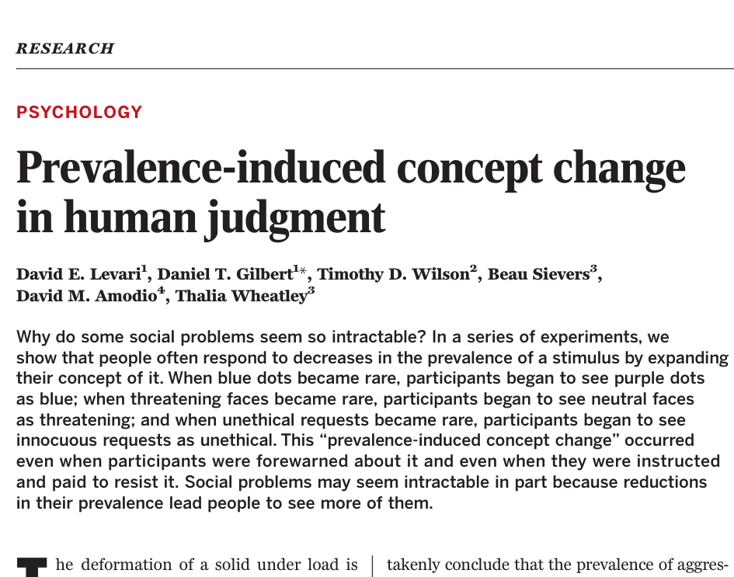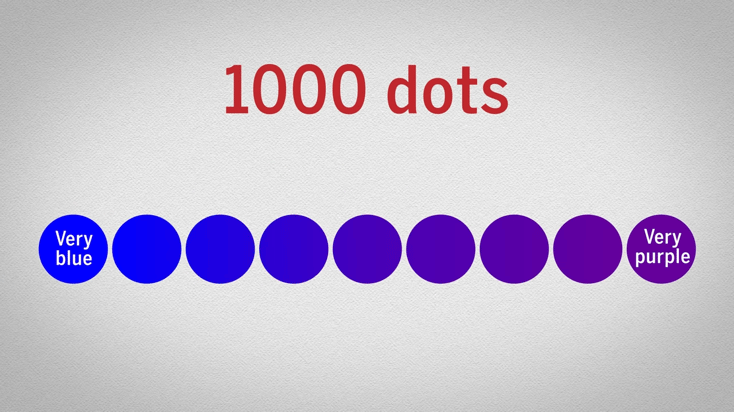Intro
Have you ever felt like your structural Engineering Projects would never end? Or have you felt anxious at the end of engineering design, even though there were no errors? Have you ever experienced discovering minor errors as your engineering project approached the final stage? As you're finding yourself nearing the end of a project, you start to think, “Is the project good enough? Have I actually done enough? Are there any problems?” The cause may be more of a psychological phenomenon rather than a defect in the structure or the project itself. Let's explore the "Blue Dot Effect," which explains this issue as a psychological phenomenon. Let's drill down on it.
Prevalence-Induced Concept Change in Human Judgment

A research team affiliated with Harvard University and other institutions published a paper in the scientific journal 'Science.' They revealed that the frequency at which problems arise is influenced by people's perceptions and judgments. The researchers coined the term 'Prevalence-Induced Concept Change' to describe this phenomenon, which is called the 'Blue Dot Effect' because one of the experiments conducted to demonstrate it used blue dots.
Experiment 1: Blue Dots

The experiment started off with a set of test subjects having to spot the number of blue dots on a page of different colors. You see, at the start, they had the equal number of dots, so it was quick and easy to spot the number of blue circles on the page. As the experiment progressed, the researchers gradually reduced the number of dots available for participants to choose from, until the number approached zero. The number of blue dots steadily dropped until the point that some participants were just shown shades of purple, not blue. Something that was counterintuitive, as the blue dots became rarer and rarer, the participants started detecting some of these shades of purple as blue, leading to a bigger and bigger error rate.
Even though the participants actually warned that the number of blue dots would drop, and they gave a $10 reward for encouraging them to detect the correct number. So, despite getting that warning and that clarification, they still detected the purple dots as blue.
Experiment 2: Mug shots
One follow-up experiment to see how it can actually affect the real world was showing people mug shots of threatening and non-threatening people. So again, starting off with an equal proportion where they made good predictions, then again warning them that the number of faces would reduce between you'd have more non-threatening people than threatening people. But over time, the same problem occurred where people's perception of what was threatening expanded with them seeing more and more error rate as the number of threatening people reduced in the series of mug shots that they were shown.
Conclusion
It's like a concrete creep. It occurs as a result of long-term exposure to high levels of stress. The Blue Dot Effect is a kind of 'concept creep.'
As we're constantly trying to find things to do as the area starts to drop off, we start to see more and more things that we need to do that potentially don't even need to be done. And as experts, that's what we try to do. This is what we're trying to spot, those errors. Potentially what we're doing is spotting errors that aren't actually there and not real issues. The problem is that even though we know that the blue dots are decreasing, it's difficult for us to solve it ourselves. So, we may need objective reviews from people who haven't been exposed to this frequency.
References
This content is inspired by the YouTube content "An Endless Project: Structural Engineering Projects" by Brendan Hasty, a structural engineer with over 20 years of experience, who provides insights and motivation for structural engineers on his YouTube channel. If you'd like to check out his original youtube video, click here: An Endless Project: Structural Engineering Projects | The Issue
Science Magazine - Are these dots purple or blue? Your answer might not be as reliable as you think
Fig. Concrete creep and concept creep - www.inews365.com
Topics
#StructuralEngineering
#CivilEngineering
#Design
#Blue Dot Effect
#Getmotivated
※ Click on the keywords below 'Topics' to view related content.